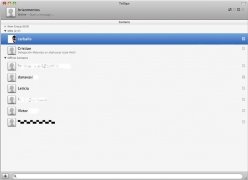

Meanwhile, real conversations are happening elsewhere - and with increasing frequency. Every day since the Musk takeover, much of my Twitter engagement now comes from crypto trolls who are tagging me into threads and bizarro, hashtagged praise for Musk from people’s accounts that aren’t quite discernible from bots. Or, in other words: Though Twitter lives on, in some ways, it’s already gone. Much like the company itself, when the original people are gone, so is the vibe, the spark, the sense of belonging.

If Musk succeeds, Twitter’s sheer numbers may grow, but it won’t be the same Twitter it was before.

Even if Twitter is gaining users, as he claims, it’s losing others at the same time. And it’s fair to say that network has been diminished in recent days - despite Musk’s tweets to the contrary. Twitter’s biggest draw was its community, not its feature set. Reproducing Twitter’s magic isn’t as simple as re-creating a microblogging tool with similar functionality - a heart, a retweet, an reply and threads. The problem is, the market hasn’t yet picked a winner for “new Twitter” - and it’s possible it never will. They’re trying to remain connected with departing friends by way of new sites, leading to multiple open browser tabs and new apps stuffed into iPhone folders. Many of those now distancing themselves from Twitter haven’t given up on their networks, however. The most active users have been leaving, reports citing internal documents said. In the days following the Elon Musk Twitter takeover, a good chunk of Twitter’s network has exited to other apps. I’m not sure that would be a good thing, though. Lately, I’ve been longing for a Trillian-like service that would allow me to keep up with Twitter’s fleeing user base, the way that Trillian once connected users to multiple IM services. In the older days of the web, an app called Trillian emerged to solve the problem of allowing users to connect to their friends across multiple messaging services, like AIM, Jabber, Yahoo! Messenger, IRC and others.


 0 kommentar(er)
0 kommentar(er)
